
In 1957, arguably the leading figure in Hollywood collaborated with a highly respected director to produce a movie titled “Touch of Evil.” After its premiere the following year, this movie became one of the timeless classics within the film noir genre and served as an inspiration for the neo-noir movement about a decade later. Orson Welles selected Charlton Heston, who was then at the peak of his success as an actor, to play the lead role in his production, soon after Heston’s role in the blockbuster historical film “The Ten Commandments.” This collaboration proved to be a perfect fit for the film noir genre.
Welles incorporated Janet Leigh, famously known for her role in Alfred Hitchcock’s iconic shower scene in Psycho, and Marlene Dietrich, a legendary Hollywood figure, into the production. He aimed to create a cinematic masterclass in film noir with Touch of Evil. This movie showcased the visual creativity that audiences had grown accustomed to from Welles. However, unlike his previous works, these innovative aspects served a pre-existing genre, and Touch of Evil might be the most flawless manifestation of it ever made. Essentially, Touch of Evil is a heartfelt tribute from Welles to film noir, a genre that only he could have beautifully expressed.
What Touch Of Evil Is About
A Crime Movie Full Of Misdirection & Malice
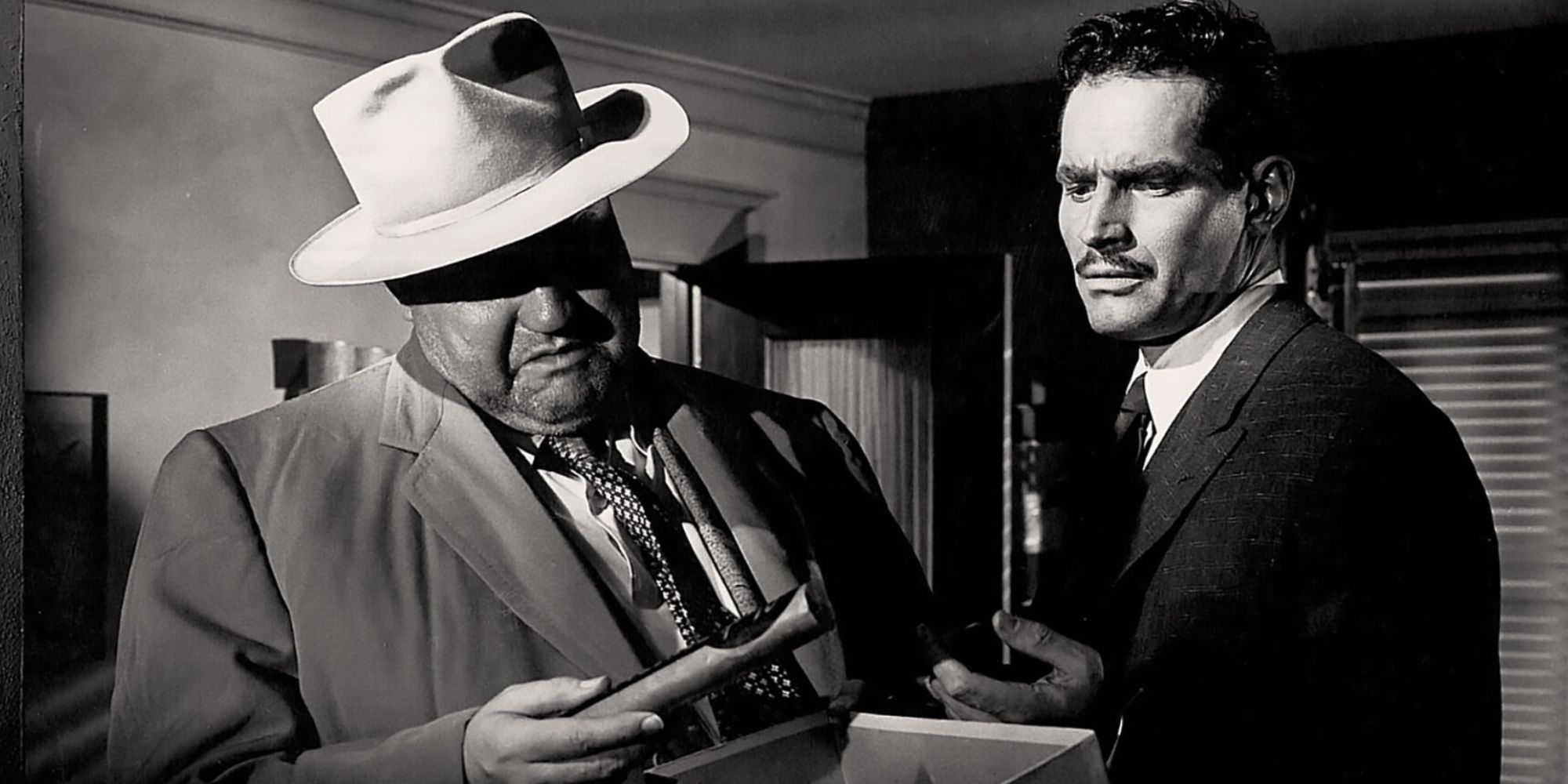
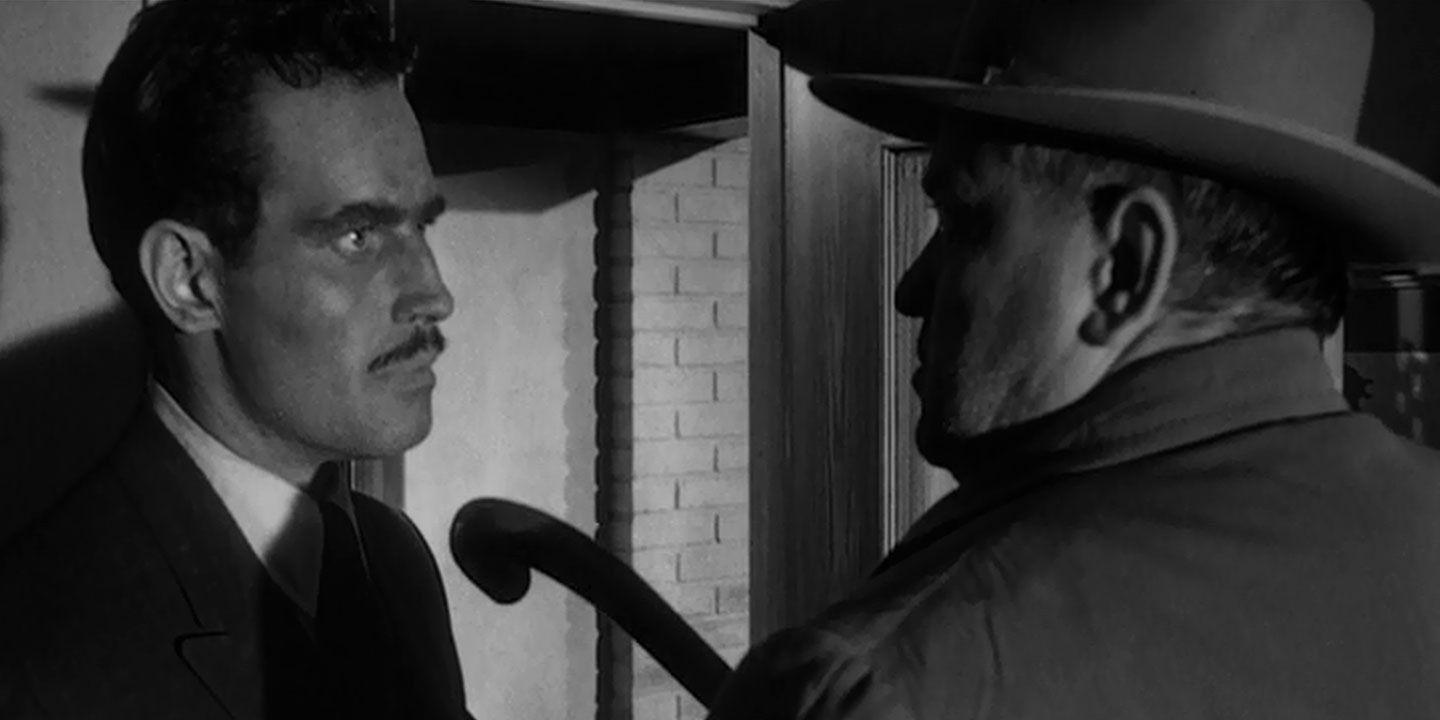
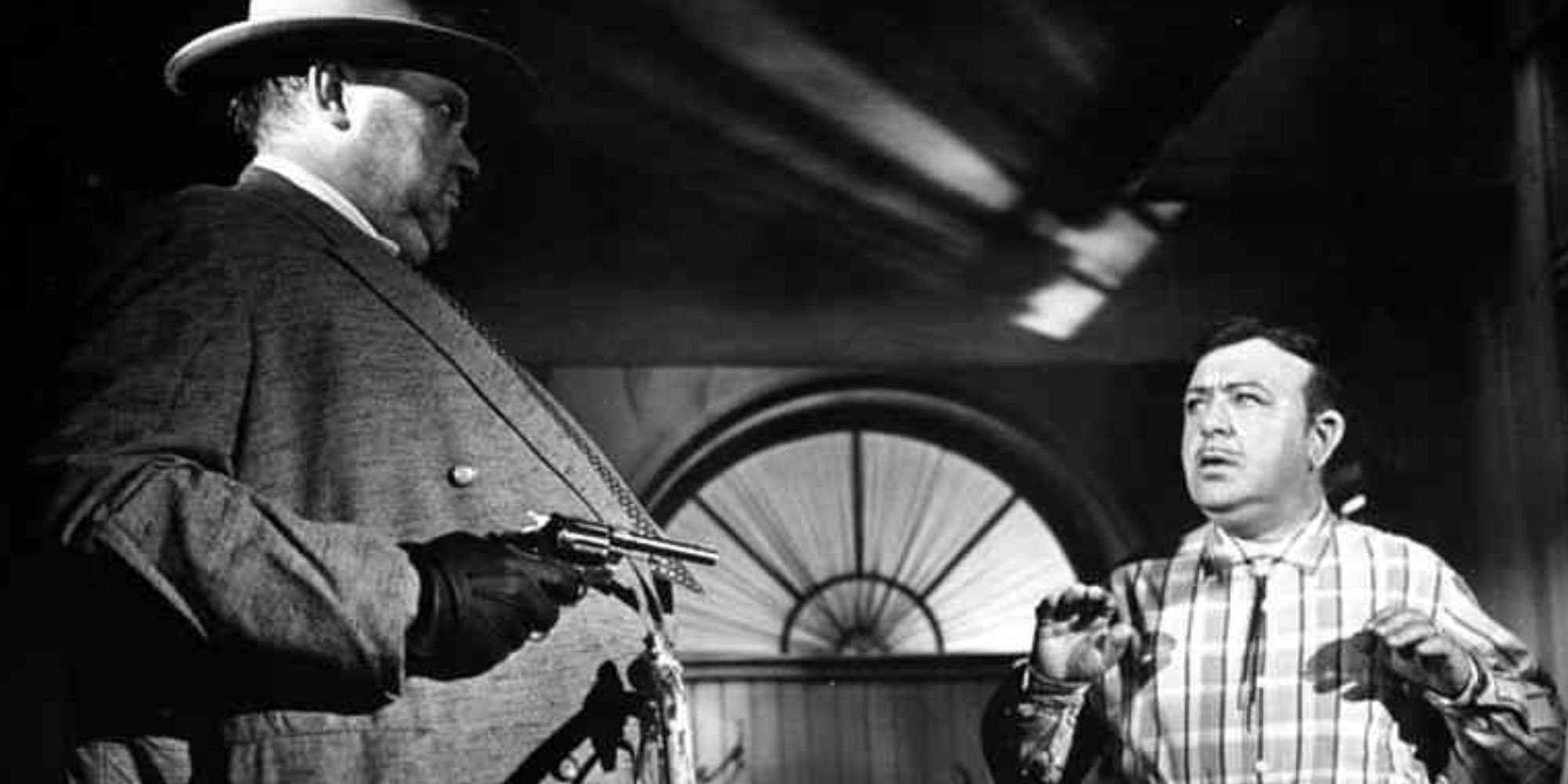
Touch of Evil
In a nutshell, this is a gripping crime film that delves into the blurred lines between wrongdoing and the wronged, offering an exhilarating journey through the complexities and deceit of noir storytelling. The narrative unfolds with a car bomb explosion at the US-Mexico border, causing protagonist Ramon Miguel Vargas, played by Charlton Heston, to postpone his honeymoon and instead investigate the perpetrator. However, the lead detective on the case, a questionable character named Hank Quinlan, portrayed by Orson Welles, raises suspicion in the minds of Vargas and his newlywed spouse as they uncover inconsistencies in his methods.
The classic film Touch of Evil is saturated with an unsettling air of wickedness and impending doom that lingers throughout, even during its high-energy climax. Most of the primary characters in the movie seem to carry a taint of evil, leaving us with the heavy feeling that moral boundaries aren’t always as distinct as they appear. This is particularly true when it comes to the character Quinlan, who embodies pure malice.
Touch Of Evil Proves Why Orson Welles Is One Of The Greatest Directors Ever
The Movie’s Opening Scene Alone Is Among The Best Works Of Suspense In Film History
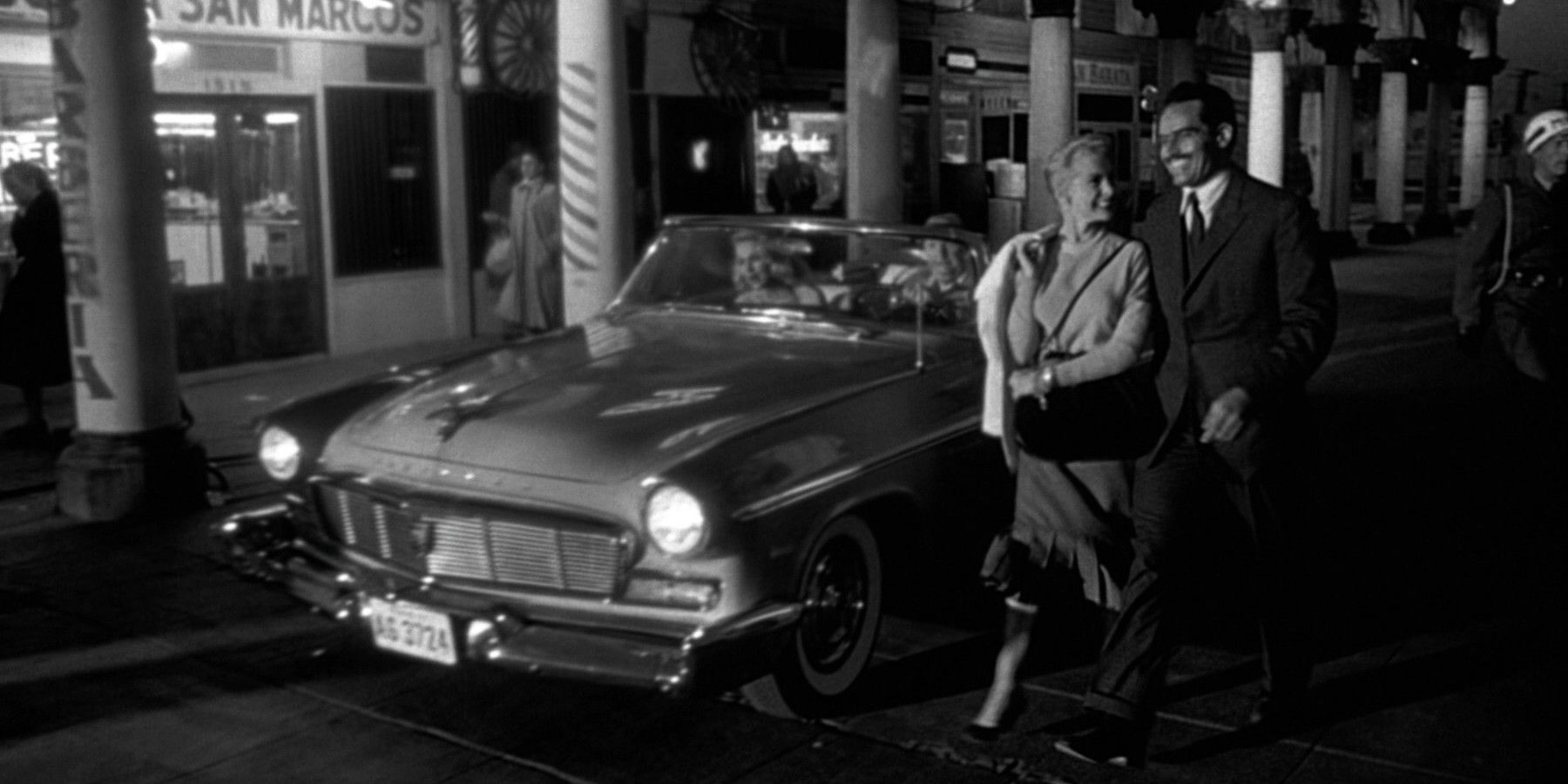


In a nod to his groundbreaking debut film “Touch of Evil,” Orson Welles’ subsequent cinematic masterpiece boldly pushes boundaries that even the acclaimed “Citizen Kane” hesitated to tackle. Sixty-seven years later, the technical prowess on display would make the team behind Netflix’s single-shot series “Adolescence” take notice. The film opens with a three-minute tracking shot, reminiscent of a crane’s view, following a car concealing a time bomb in its trunk as it navigates through the bustling streets of a Mexican border town.
The bomb is hidden from everyone except the viewers, creating an atmosphere of suspense that not even the legendary Alfred Hitchcock could achieve. Additionally, “Touch of Evil” makes use of numerous visual techniques that are characteristic of Orson Welles’ innovative filmmaking style, such as his signature low-angle shots and a scene filmed from the front of a moving vehicle – one of the earliest instances in cinema history. By the end of the movie, there can be no question that Welles was an exceptional director.
Touch Of Evil Perfectly Exemplifies What A Film Noir Is Supposed To Be
It Offers Up Perfect Examples Of Virtually Every Noir Trope



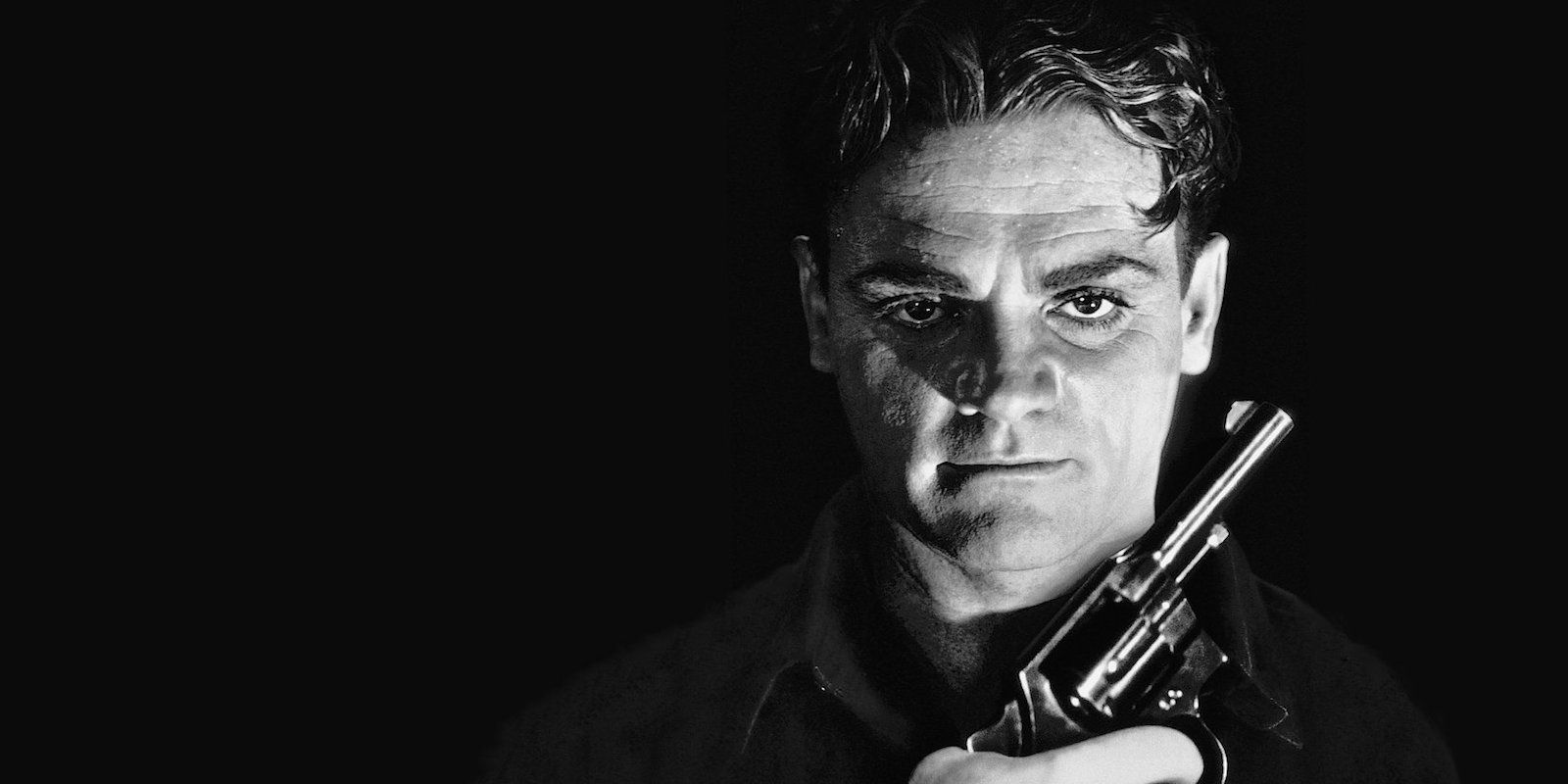
By the time Welles created “Touch of Evil”, the noir genre was already firmly established. However, it was evident that he aimed to produce a film that would be recognized as a seminal work in the history of film noir. Without a doubt, he achieved his goal, as the movie provides nearly every classic noir motif. The mood of “Touch of Evil” is consistently foreboding and unsettling, leaving viewers with the impression that the world may be darker than it seems to the untrained eye.
In the film “Touch of Evil,” Welles emphasizes its dark and mysterious ambiance through the use of high-contrast black-and-white cinematography and lighting that accentuates the film’s shadowy themes. The most evident reference to the noir genre is the characterization of Hank Quinlan, a detective wearing a fedora who embodies the tough, world-weary archetype common in film noir. However, unlike iconic detectives such as Sam Spade and Philip Marlowe, Quinlan is portrayed as a completely corrupt and reprehensible individual, bearing a striking resemblance to the gangsters often played by James Cagney, a specialist in noir roles.
In classic noir style, even Quinlan’s moral character proves to be complex, with his dark side contrasting his exceptional skills as a detective in the climactic dialogue of Touch of Evil. Marlene Dietrich’s captivating appearance in the movie’s concluding scene serves as a fitting finale for a work that has earned its place as the epitome of noir cinema.
Read More
- Who Is Harley Wallace? The Heartbreaking Truth Behind Bring Her Back’s Dedication
- 50 Ankle Break & Score Sound ID Codes for Basketball Zero
- 50 Goal Sound ID Codes for Blue Lock Rivals
- KPop Demon Hunters: Real Ages Revealed?!
- Lottery apologizes after thousands mistakenly told they won millions
- Ultimate AI Limit Beginner’s Guide [Best Stats, Gear, Weapons & More]
- 100 Most-Watched TV Series of 2024-25 Across Streaming, Broadcast and Cable: ‘Squid Game’ Leads This Season’s Rankers
- Umamusume: Pretty Derby Support Card Tier List [Release]
- J.K. Rowling isn’t as involved in the Harry Potter series from HBO Max as fans might have expected. The author has clarified what she is doing
- How to play Delta Force Black Hawk Down campaign solo. Single player Explained
2025-04-27 18:18